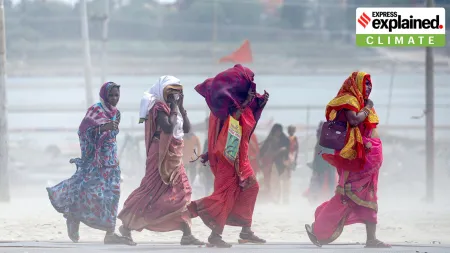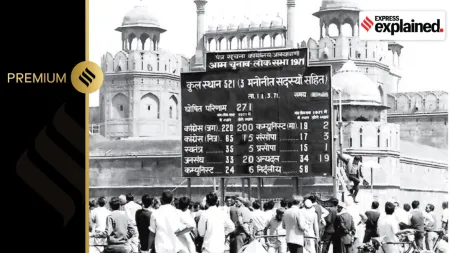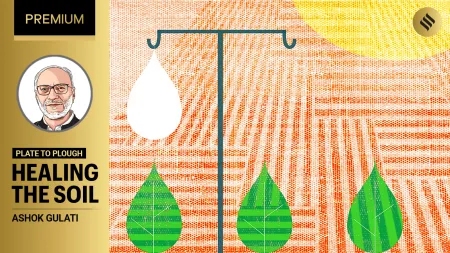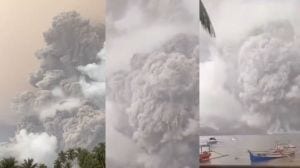- India
- International
Explained: How the Uttarakhand flash flood changed Alaknanda colour
The muddiness, which persisted on Friday, is the result of suspended sand, clay, rocks, in the water, geologists and environment scientists in Uttarakhand said.
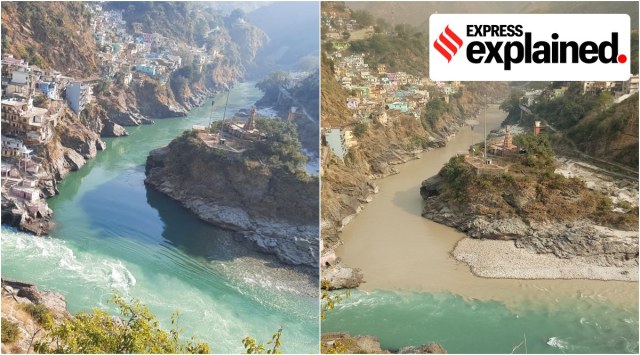 Before and after images of the Alaknanda at Devprayag.
Before and after images of the Alaknanda at Devprayag.The Alaknanda rises in the Satopanth glacier and is met at Vishnuprayag by the Dhauli Ganga, which carried deposits from the flood on Feb 7. The Alaknanda is then met by the Nandakini at Nandaprayag, Pindar at Karnaprayag, Mandakini at Rudraprayag, and Bhagirathi at Devprayag. Thereafter, it is known as Ganga, which flows to Rishikesh and Haridwar.
The pictures below show the Alaknanda at Devprayag, muddied by the landslide and flash flood in the Rishi Ganga and Dhauli Ganga on February 7. The muddiness, which persisted on Friday, is the result of suspended sand, clay, rocks, in the water, geologists and environment scientists in Uttarakhand said.
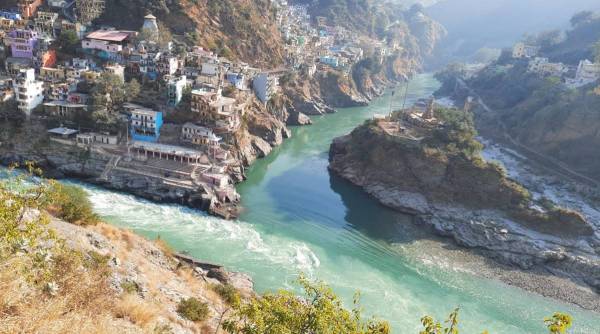 The Alaknanda is a clear blue-green at Devprayag in an Uttarakhand Pollution Control Board photo from the last week of January.
The Alaknanda is a clear blue-green at Devprayag in an Uttarakhand Pollution Control Board photo from the last week of January.
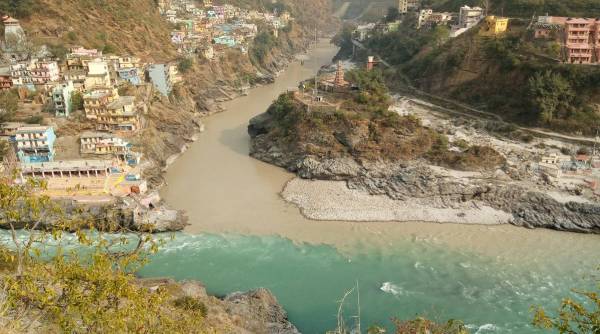 This photo of the muddy river was taken on February 13, six days after the flash flood. The Alaknanda at Devprayag looked the same even on Friday.
This photo of the muddy river was taken on February 13, six days after the flash flood. The Alaknanda at Devprayag looked the same even on Friday.
The river is usually clear in winter, Uttarakhand Pollution Control Board (UPCB) environment engineer Ankur Kansal said; it becomes muddy only in the monsoon. Kansal could not recall when the Alaknanda had been seen this muddy in winter. The flood weakened downstream of Tapovan, and the mud and debris reached Rishikesh on February 11, travelling 250 km in three days. UPCB data show the Ganga was clean at Rishikesh and Haridwar on February 6; it was classified as “muddy” on February 11, and is currently “turbid”.
 The river is usually clear in winter; it becomes muddy only in the monsoon.
The river is usually clear in winter; it becomes muddy only in the monsoon.
The volume of debris that fell into the Rishi Ganga and was carried downstream to the Alaknanda is difficult to estimate, Dr Kalachand Sain, Director, Wadia Institute of Himalayan Geology, said. But it is estimated that a glacial rock mass of 0.2 to 0.4 million cubic metre volume fell from about 5,600 m to 3,600 m along a 40-degree incline, transforming into a muddy slurry as it picked up vegetation and loose rock along the way, Dr Sain said. Prof Y P Sundriyal of the Hemvati Nandan Bahuguna Garhwal University in Srinagar said no timeframe can be given for the water to flow clear again.
More Explained
EXPRESS OPINION
May 01: Latest News
- 01
- 02
- 03
- 04
- 05


